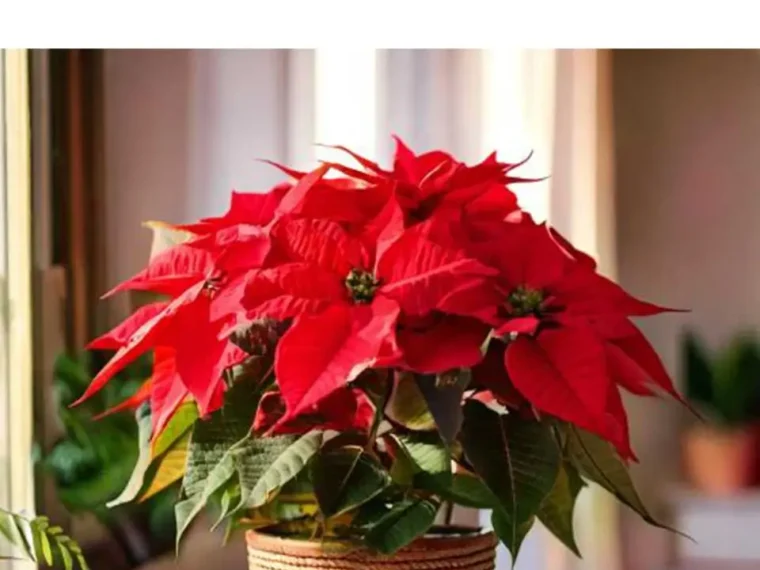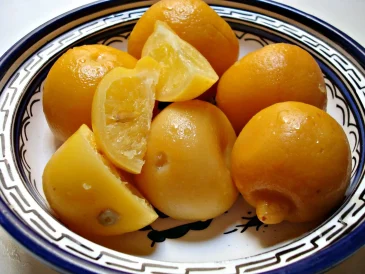Poinsettias are iconic plants often linked to the holiday season, with their bright red and green leaves bringing festive cheer to homes across the globe.
However, these vibrant plants can be much more than just holiday decor. With the right care, poinsettias can thrive year-round, continuing to brighten your home and even rebloom after the holiday season.
Instead of discarding your poinsettia once the festivities are over, consider the many benefits of keeping it around all year.
Here’s how you can keep your poinsettia healthy and vibrant long after the holidays.
Understanding the Lifespan of Poinsettias
Poinsettias are perennial plants native to Mexico and Central America, where they grow into large shrubs in the wild. Indoors, they can live for several years with the proper care. To keep your poinsettia healthy year-round, it’s important to understand its natural growth cycle.
After blooming, the plant enters a dormant phase where it requires less attention. This phase is essential for rejuvenation, so adapting your care routine to match the plant’s needs during this time is crucial to maintaining its beauty and vitality.
The Benefits of Keeping Poinsettias Year-Round
There are numerous benefits to keeping a poinsettia beyond the holiday season:
- Improved Indoor Air Quality: Poinsettias can help purify the air by filtering toxins and increasing humidity, making them a natural air purifier.
- A Rewarding Hobby: Nurturing a poinsettia through its growth cycles can provide a sense of accomplishment and satisfaction as you watch it thrive and rebloom.
- Year-Round Color: By maintaining a poinsettia year-round, you add a splash of vibrant color to your home, complementing various interior styles and décor themes.
Proper Care Techniques for Poinsettias After the Holidays
Once the holidays are over, it’s essential to adjust your care routine to help your poinsettia stay healthy:
1. Watering
After blooming, reduce watering to avoid root rot. Poinsettias don’t need as much water during their dormant phase. Allow the soil to dry out between waterings to prevent overhydration.
2. Temperature and Light
Place your poinsettia in a cool, well-lit spot but avoid placing it in direct sunlight or in drafty areas. Aim for a temperature range of 60-70°F. This stable environment will help your plant rest and recuperate.
3. Fertilizing
During the dormant phase, fertilizing should be kept to a minimum. Use a diluted, balanced fertilizer about once a month. Once spring approaches, you can begin to increase fertilization to encourage new growth.
4. Pruning
After the holidays, prune any leggy growth or spent flowers to encourage a fuller, bushier shape. Cutting back helps the plant conserve energy and prepares it for healthy new growth when spring arrives.
How to Encourage Reblooming in Poinsettias
If you’d like your poinsettia to bloom again next holiday season, it will need a bit of extra care to mimic its natural growth cycle:
1. Provide Darkness
Starting in early October, give your poinsettia 14-16 hours of complete darkness each night for 8-10 weeks. You can achieve this by placing the plant in a dark closet or covering it with a box during the nighttime. During the day, however, make sure the plant receives bright, indirect sunlight.
2. Temperature Control
Maintain a consistent temperature of 60-70°F. This will stimulate the plant to bloom, and with patience, you’ll see the vibrant bracts reappear just in time for the holidays.
By following these steps, you can encourage your poinsettia to rebloom and enjoy its holiday color year after year.
Common Challenges and Solutions in Poinsettia Care
Poinsettias can be a bit fussy, but with the right attention, common issues can be easily managed:
1. Leaf Drop
Sudden temperature changes, drafts, or overwatering can cause leaves to drop. To avoid this, place your poinsettia in a stable environment with consistent temperature and humidity.
2. Root Rot
This is a common problem caused by overwatering. Prevent root rot by ensuring your poinsettia’s pot has proper drainage and by only watering when the soil feels dry to the touch.
3. Pests
If you notice pests like whiteflies or aphids, treat your poinsettia with insecticidal soap or neem oil. Regularly inspect your plant for pests to catch infestations early.
By keeping an eye out for these common issues, you can address them quickly and keep your plant healthy and thriving.
Creative Ways to Incorporate Poinsettias in Home Decor
Poinsettias are more than just festive plants; their striking colors and shape make them versatile decor elements year-round:
- Centerpieces: Use poinsettias as stunning centerpieces for dining tables or coffee tables.
- Mantels and Shelves: Place poinsettias in decorative pots or baskets on mantels or shelves to add color and texture to your space.
- Outdoor Arrangements: During the warmer months, poinsettias can be moved outside and incorporated into outdoor arrangements or planters.
- Living Wall Displays: Consider creating a unique living wall of poinsettias for a dramatic and colorful effect in any room of your home.
The possibilities are endless, and these plants can easily adapt to various decorating styles, from modern minimalist to classic vintage.
Environmental Impact of Disposing of Poinsettias
Unfortunately, many people discard their poinsettias after the holiday season, contributing to environmental waste. Here’s how keeping your poinsettia year-round can be a more eco-friendly option:
- Reduce Waste: Disposing of plants after their prime leads to unnecessary waste. By keeping your poinsettia alive, you reduce that environmental impact.
- Composting: If your poinsettia eventually reaches the end of its life, consider composting it rather than throwing it away. This helps return nutrients to the soil and supports a healthier ecosystem.
By making the choice to nurture your poinsettia, you’re taking a step toward more sustainable gardening practices.
Conclusion: Enjoy the Year-Round Beauty of Poinsettias
Poinsettias are much more than just holiday plants. With the right care, they can thrive throughout the year, offering vibrant color and natural beauty long after the holidays.
Whether you’re a seasoned gardener or just starting your plant care journey, keeping a poinsettia year-round can be a rewarding and sustainable choice. Embrace its natural growth cycle, encourage reblooming, and enjoy its beauty for many months to come.
Ready to Give Your Poinsettia a Second Life?
Instead of letting your poinsettia fade after the holidays, try keeping it around and nurturing it for year-round enjoyment. Follow these simple care tips, and you’ll soon find that your poinsettia is a lasting, beautiful part of your home decor!




